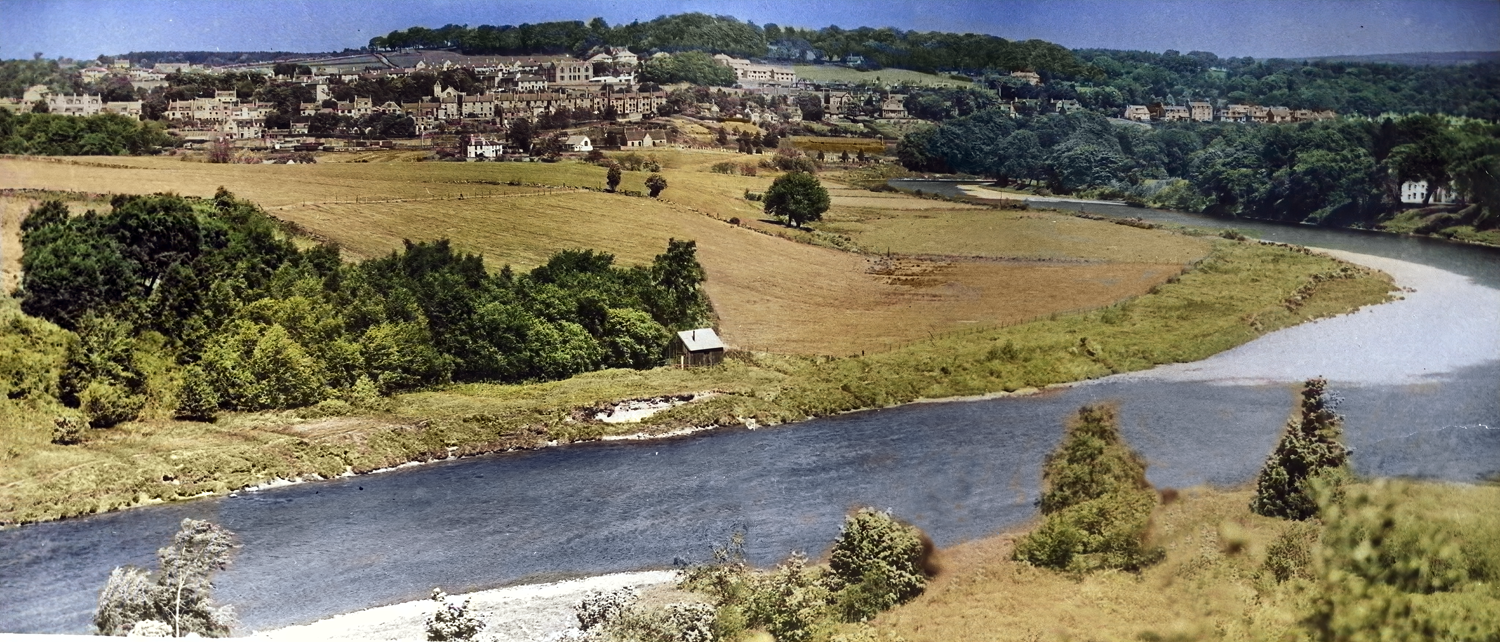Reproduced with the permission of the National Library of Scotland: National Library of Scotland - Map Images (nls.uk)
About a mile South-westward from the village of Peterculter, on rising ground between the Deeside Way and the river is the remains of a Roman Marching Camp, locally known as Normandykes. Recent archaeology in the area, during the building of the Western Peripheral Route, puts the date of Roman settlement around 83/84 AD. You can read more about the discovery from the Aberdeenshire Council Website booklet "Highway Through History."
The first Caledonian to be recorded in history is Calcagus. He was a Chieftain of the Caledonian Confederacy and is thought to have fought at the Battle of Mon Graupius. The battle is supposed to have taken place around AD 83/84 against the Roman army of Gnaeus Julius Agricola. In Celtic, Cal-ca-gos "possessing a blade" from the Gaelic "calgach" meaning prickly or fierce.
Tacitus wrote a speech which he attributed to Calgacus, saying that Calgacus gave it in advance of the Battle of Mons Graupius. The speech describes the exploitation of Britain by Rome and rouses his troops to fight.
Tacitus wrote a speech which he attributed to Calgacus, saying that Calgacus gave it in advance of the Battle of Mons Graupius. The speech describes the exploitation of Britain by Rome and rouses his troops to fight.

Peterculter from the South West
There are no written records, so much has been speculated about the origins of Normandykes. The "Old Statistical Account of Scotland" suggested that the earthworks could be Danish, but later versions of the Statistical Account details archaelogical digs showing Roman settlement. This is backed up by the discovery of ovens at Milltimber, half a mile east. The water supply for the nearby farm of Alton was still being drawn from the source of the Roman Well until the 1980s.
In his book "Deeside" by Alexander Inkson McConnochie, published in 1895, he writes:
In his book "Deeside" by Alexander Inkson McConnochie, published in 1895, he writes:
It may be observed from the train soon after leaving Culter, and is held by some to mark the site of the Roman Devana, while others contend that Loch Davan at Dinnet is better entitled to that honour. It lies immediately to the West of Alton, and a well on the eastern rampart is still known as Norman's Well. A supposed "Roman Ford" across the Dee is still pointed out. The camp is of an oblong rectangular form, the northern enclosing wall, which can be distinctly traced, being 985 yards in length. Authorities competent to deal with such questions express the belief that it had been the work of Lollius Urbicus, who has been described as the 'gallant lieutenant of Antoninus', a Roman Emperor who died AD 161. It is a spacious enclosure, now planted with wood, capable of lodging a large army. The prospect is very fine, and one can fancy the Roman soldier of these old times looking forth from his tent door upon the might forest of black pine trees around him, musing with a sorrowful heart upon the smiling plains of his native Italy, with its bright blue sky, and his own home- whose porch, interwoven with vines, shelters his pensive wife, musing of the absent father as her children play around her."
A detailed account of the excavations of Roman camps at Raedykes and Glenmailen, by Dr George Macdonald, was published by the "Proceedings of the Society of Antiquaries of Scotland " in 1916. Access their website by clicking the button above.
Normandykes is not immediately accessible, and it is best viewed from the Deeside Way. Look South from the point on the Deeside Way, where the path diverts off the old railway line, to the North, onto the Coalford road. The wooded area, with the River Dee beyond, marks the North- east corner of the Normandykes site.